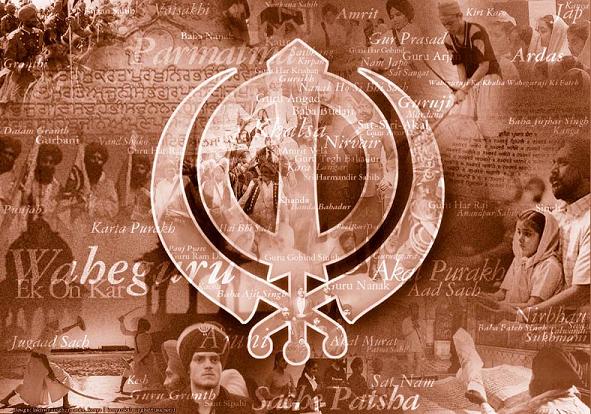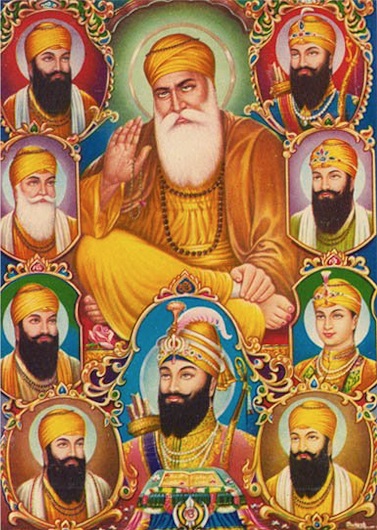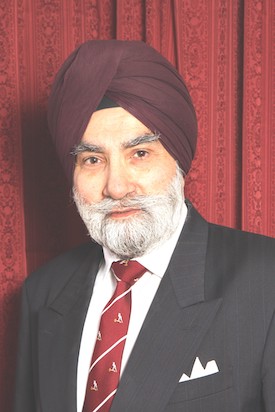Background:
Due to the longstanding need felt by British Sikhs, the setting up of the Sikh Council UK has been widely welcomed. The Council has gained rapid recognition in government circles and is settling down to address the most important challenges we face today.
This is perhaps the right time to remind ourselves what the main issues and challenges are.
Internal divisions centred around personalities have been a major setback for Sikh unity and progress of Sikh issues. Effective communication at local and national levels in English has been the other difficulty. Without balanced presentation of Sikh problems to the government and departments in the language of the British establishment, Sikh jathebandis are unable to influence government policy.
In the past, some ambitious individuals have used the language difficulty to pursue own agendas. The influence they have on Sikh affairs has been far in excess of their knowledge of Sikh tradition or actual support at grassroots level. For example, the French Sikh turban case could have been handled much more openly and effectively from the start. However, personal ambition rather than knowledge of Sikh religious significance of dastaar, took over. In an attempt to seek exemption from French restrictions, by some clever argument, Sikh dastaar was presented as a “cultural” item instead of an essential religious requirement. Regrettably, as in other such cases, history is being re-written to gloss over such errors. In this case, other organisations were blamed for Sikh failure.
Despite some achievements, UK and European acceptance of Sikh identity has been incremental, and grudgingly conceded after much lobbying, demonstrations and legal battles. Due to lack of co-ordinated professional team-working at frontline level, progress made on the most important issues has been limited.
At individual level Sikhs are prosperous. Next generations are doing well in education and professions. However, despite being a sizeable community, Sikh identity is hardly seen in public life, politics and the Parliament. There is much ignorance about who Sikhs are. Future Sikh generations need to be proud of the “Sikh” part of their “Sikh British” identity to grow up as responsible citizens fully aware of own heritage and culture. Sense of belonging to a community is an important aspect of personal development and identity.
That sense of pride and belonging also depends on the acceptance of the community’s identity within the larger British plural society. That is one important goal for the Sikh Council UK.
Past achievements: Setting the record straight
Those who claim that they have been able to get results only through personal contacts are out of touch with ground realities. Despite exaggerated claims of individual contribution, success in the Mandla case, for example, was due to united support by the Sangat. The case reached the House of Lords and is regarded as a milestone achievement.
To set the record straight, I am content to quote S. Sewa Singh Mandla. In response to a query to clarify how the case was won, he wrote on 17 May 2010:
“A couple of years ago the Sikh Police Association London at their AGM wanted to celebrate 25th anniversary of Mandla v Lee case and had invited me to give a talk on the case and make a presentation, which I did. In my talk I said that having lost the case in the lower courts I realized that this case will affect the entire Sikh Community and as such I wanted to involve the Community in the case. With this in mind I went to Sant Baba Puran Singh Ji the Founder of Nishkam Sewak Jatha Birmingham (GNNSJ) and sought His Blessing and assistance.
It was GNNSJ who prepared information packs about Sikhism and the importance of the Turban to the Sikhs and send them out to all Members of Parliament and other important people to increase awareness and support. GNNSJ got support from all communities for this cause. It was GNNSJ which took a lead in the campaign and organized a mass rally at Hyde Park in London. I showed the clip of the BBC Television interview with Sant Baba Puran Singh Ji, Bhai Sahib Norang Singh ji (the then Chairman of GNNSJ), Mr. Mavi of (CRE) and my self and I finally said that the case in the House of Lords was won purely with the Blessings of Sant Baba Puran Singh Ji. Now that is the truth. I know that it was GNNSJ who mobilised the entire community and in fact hired 70 coaches and send them to the Gurudwaras and other organisations who wanted to attend the rally at the Hyde Park.”
(S. Sewa Singh Mandla’s e-mail of 17 May 2010)
Yet, this collective historic achievement is being re-written with a bias towards individual contribution to the ultimate success. The opportunity to build on a milestone victory for Sikh unity and identity, has been lost
The historical fact is that past achievements were due to united effort by Sikh Sangats. There are important lessons to be learnt. Ambitious activists with language and communication skills, otherwise dedicated to Panthic work, tend to take personal credit far in excess of their actual contribution. Their proximity with departmental officials gives them own following in the community. That is not in the community’s long term interest. Individuals with language skills should serve jathebandis; it is not for jathebandis to serve their personal aspirations.
Issues for the Sikh Council UK
The establishment of the Sikh Council UK gives us an opportunity to review the most important issues which concern us as a distinct religio-social community; the extent to which progress has been made and the challenges which we continue to face. These would be matters which need to be taken up by the Sikh Council and affiliated organisations, with the UK and European governments, agencies and authorities. Most other issues can be dealt with by Sikh organisations and Panthic jathebandis with experience in specific areas. Anglo-Sikh heritage, Khalsa Aid and legal representation of Sikh issues e.g. by United Sikhs, are important activities which promote Sikh identity, but need not be dealt with in the context of matters discussed under the umbrella of Sikh Council UK.
With regard to Sikh expectations from the British establishment (mainly the legislative/legal and administrative system), we would have expected full recognition of Sikhs as a distinct community in the British multicultural society after over 50 years of Sikh immigration. We are the largest single distinct minority (religio-ethnic) group in the United Kingdom, but we were not even recognized as such until 1983 (see below). Even today, that recognition has been less than forthcoming in areas such as monitoring of Sikhs as a distinct community with own religio-social identity, Sikh human rights, including religious rights and freedoms, and equal opportunities in various fields such as employment, education and representation at various levels of local and national government.
The media, which is also a part of British establishment, plays an important role in educating the public and changing set attitudes towards immigrant communities. In case of the Sikhs, it has, in fact, played quite the opposite role in creating confusion and distrust about Sikh identity. That despite the fact that the Sikhs are a hard working and law-abiding community least dependent on state benefits.
The ignorance which security agencies continue to show about Sikh identity in the UK and Europe is quite remarkable despite over 200 years of Anglo-Sikh relations.
Question of Sikh monitoring
Sikhs qualify under “ethnic”, “religious” or any other classification to be counted as a distinct community. Those who restrict Sikh counting to “religion” only, or prefer to wait for some possible future system which describes them more correctly, do not understand Sikh temporal-spiritual (miri-piri) tradition, or are just living in some unreal world while the community continues to suffer discrimination.
The Race Relations Act 1976 was meant to give equal rights to all ethnic minorities. However, the Sikhs were not protected by the Act, because they were not considered to be an ethnic group. It took seven years for the Sikhs to be given protection under the Race Relations law in 1983. In that year the House of Lords (in the case of Mandla v. Lee), ruled that the Sikhs qualified as an “ethnic” minority, albeit, by redefining “ethnicity” to some extent.
That did not please some individuals and the opportunity to be monitored under the current system as an ethnic minority was lost.
The unfortunate Sikh experience is that sometimes, personally held views are passed on as representative views of the UK Sikhs. One example in the context of the “ethnic” monitoring debate is that Sikhs are only a “religion” and not an ethnic community as defined by the House of Lords in the Mandla case. That is not a generally held view about Sikhi, which is a twin track spiritual-temporal way of life (the “miri-piri” approach).
The “ethnic” aspect is derived from an inseparable combination of
many factors, which not only include an independent religious
ideology but also, as one “people”, common heritage, history,
language and culture. All those who become Sikhs, regardless of
their previous background, automatically share these traits
according to the Law Lords. Sikhi is a way of life which is now
protected under the Race Relations legislation. Never mind what
one’s personal views may be, that is the law of this land and
Sikhs legally qualify for monitoring under any system based on
“ethnicity” or “religion” or any other distinct theo-social
community definition. Yet, there are some leading Sikh “lights”
who continue to insist that we should continue to suffer
disadvantages by not being counted and monitored unless it is on
the basis of “religion” only.
UK Sikhs hope that a change in the monitoring system in future would give them the right to be monitored as a distinct community. Sikh Council UK can ensure that the collective views of the Sikhs are heard.
Government consultation preferences
Government departments prefer to consult Sikhs and, presumably, other communities, through established personal contacts only. Officials are usually reluctant to come to terms with changing circumstances and to meet new faces.
It is for Sikh organisations to present a united view when consulted by the government, departments and agencies. Communication experts should serve organisations to present that agreed view.
After the terrorist attack in America on 11th September, 2001, we also suffered due to mistaken identity, and misleading terrorist profiling of Sikhs by security agencies. Sikhs were attacked but the police did not keep figures because Sikhs are not monitored under the current system for collating statistics, despite the fact that in law (by virtue of the Mandla case 1983) Sikhs qualified under religious as well as ethnic categories.
Government consultation with the Sikhs has remained ineffective. Except for one recent selection in the Lords, visible Sikh identity is missing in the House of Commons. As a consequence, the Sikhs are hardly able to make any prior contribution to the process of law making to ensure that their religious identity and rights as a distinct community, are safeguarded. There is much frustration in the community. Either Sikhs have not been consulted before policy decisions about future legislation, or there have been misunderstandings that have led to a lack of protection of Sikh religious rights. Sometimes, the Government says that it has consulted Sikh “leaders”. We are left wondering who these Sikh representatives are, who advise the government departments.
Immediately after 11th September, 2001, without consultation, Sikhs were told not to wear the “kirpan. A Home Office Minister wrote to the Sikhs that he had been advised that Sikhs could carry small wooden or plastic “kirpans”. For practising Sikhs that was a cruel joke! Sikhs do not know to this day who gave that advice.
Before final summing up, there are some unique features of the Sikh way of life which should be noted. Compared with orthodox Semitic and eastern religious ideologies, the end purpose of Sikhi is to serve creation (as the image of the Creator) here and now. No other reward is expected or sought in some hereafter existence. This direct “here and now” activism - miri aspect of Sikhi - which has claimed countless martyrdoms, is inherent in “Raj Karega Khalsa”, “Degh, Tegh, Fateh” and “halemi raj” ideals. These are not exclusive but inclusive concepts for the wellbeing of all humanity.
Sikhi is more than a traditional “religion” due to its stress on action based life for the good of all.
Conclusion
Over 700,000 British Sikhs make up the largest religious and “ethnic” UK minority. In the last national census, Sikhs were given an optional “Religion” box to tick. However, religion is NOT used for monitoring any discrimination so that policy changes can be made to ensure a more level playing field in future. Monitoring of Sikhs under any current system is the first priority for the Sikh Council UK and affiliated organisations. Most other issues relate to this main goal which remains to be achieved.
Challenges to Sikh identity (ideological and visible) must be faced through better education of non-Sikhs including UK and European governments, authorities and security agencies. The French Dastaar issue, airport Dastaar searches, ban on wearing visible Sikh Kakaars, the Kirpaan and the Kara are the main challenges.
Fair share of visible Sikh representation in British public life is the third priority. Again this issue is relevant to the question of Sikh monitoring in different fields. Sikhs are not getting their fair share of senior appointments, awards and honours for community work. (It may be that mainstream Sikh organisations are slow to send timely nominations.)
Sikhs lack regular contacts with the mainstream national media. They should be in the news more often, projecting a positive image. Sikhs need effective media management at local and national levels. Only youngish, well educated and presentable Sikhs can do this. Older “jathedar” types must understand this and nominate and promote youngish Sikhs for such roles.
Sikh human rights area in the Indian context is a controversial but important issue. It continues to divide UK Sikhs but it must be faced, albeit, with presentational caution to ensure that British Sikhs are seen to be raising just concerns on humanitarian grounds. Like all UK citizens they have every right to do that through the Sikh Council UK and through the British government.
As mentioned at the outset, Sikh heritage including Anglo-Sikh heritage aspect, and global Sikhi seva in the field, are important for promoting Sikh identity but would be best left to voluntary organisations. Interpretation of Gurbani in the context of 21st Century issues is an ongoing need. Research by panels of UK Sikh scholars on some of these issues can be supported by organisations like the Sikh Missionary Society UK.
Ongoing discussion of priority issues and challenges which concern British Sikhs and the Sikh Council UK, is a learning process. Unhealthy official cronyism has been a divisive and damaging factor in British Sikh affairs. It is hoped that any criticism does not detract from the dedication and positive contribution of some individuals.
Diaspora Sikhs look up to British Sikhs to lead.
© Copyright Gurmukh Singh (U.K.)
E-mail: sewauk2005@yahoo.co.uk
Please acknowledge quotations from this article
Articles may be published subject to prior approval by the author


